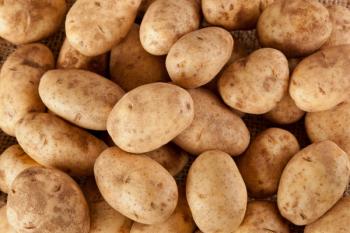
Analysis of the Inorganic Content of Milk via Laser Induced Breakdown Spectroscopy
Although milk is considered among the most complete and nutrition-rich natural foods, the concentration of vitamins and minerals in milk can vary depending on a variety of circumstances. Stelios Couris of the University of Patras and the Foundation for Research and Technology-Hellas (Patras, Greece) has been studying the inorganic elemental composition of a variety of milk samples using LIBS and spoke to Spectroscopy about this research.
Although milk is considered among the most complete and nutrition-rich natural foods, the concentration of vitamins and minerals in milk can vary depending on a variety of circumstances, such as the type of animal providing the product, as well as its age and diet, in addition to environmental conditions. Many analytical techniques used to determine the presence and content of these are rather complicated and can be employed only by well trained personnel; they are also time consuming and require lengthy sample preparation procedures. Laser-induced breakdown spectroscopy (LIBS) can, in principle, overcome these limitations, allowing for the rapid elemental analysis of a milk sample. Stelios Couris of the University of Patras and the Foundation for Research and Technology-Hellas (Patras, Greece) has been studying the inorganic elemental composition of a variety of milk samples using LIBS. Couris spoke to Spectroscopy about this research.
Your recent paper (1) outlines the use of laser induced breakdown spectroscopy (LIBS) compared to atomic absorption spectroscopy (AAS) to investigate the inorganic content of different milk samples. What inspired this work?
Thank you very much for this question, as it gives me the opportunity to put the present work in a broader context and explain our motivations and research efforts better. During the last years, our research efforts have been focused on the demonstration of the potential of LIBS, assisted by machine learning (ML), for quality control and authentication of different foodstuffs. In that context, different proof-of-concept studies have been performed concerning different foodstuffs (such as, for example, olive oil, honey, and milk) (1–4). More specifically, the present work is a part of ongoing research concerning the fast and in situ discrimination of milk samples of different animal origins, such as sheep, goats, and cows, by LIBS spectroscopy, given that all of these types of milks are used widely in Greece as milk and in dairy products. For this purpose, we collected, studied, and analyzed thousands of LIBS spectra of these types of milk, both commercially available and from farms (raw milk). The resultsare spectacular, in our opinion, as we have demonstrated the efficient and accurate classification of such milk samples with percentages of correct classification exceeding 95%. In these investigations, LIBS spectra from 200 to 1000 nm were collected and analyzed by ML algorithms. To reduce the number of variables used by the algorithms (or equivalently the spectral data), we decided to investigate what would be the impact on the classification accuracies if only the spectral signatures of some elements related to milk minerals (such as the milk’s inorganic content) were considered. In that view, initially, the spectral lines of Ca, Na, Mg, and K were used, readily observable in all types of liquid milk samples. As previously mentioned, this idea was very successful, resulting in classification accuracies of about 95%. In this direction, to improve the detection of these elements in milk, the water content of milk was removed by lyophilization, and lyophilized powders of milk samples were prepared. This procedure allowed the better observation of the different elements related to milk’s inorganic content. Then, using a similar idea, the organic content of milk was removed by milk ashing and studying the milk ash. This resulted to even better detection of the abovementioned elements, while other elements present in milk in minor concentrations, such as P, Zn, Cu, and Si, were also clearly observed. For the above studies, several hundred commercial and raw milk (from different local farms) samples were studied, without any further preparation. The present work deals only with this last part of our milk-related LIBS investigations.
What advantages does LIBS spectroscopy offer for milk analysis that other techniques available may have lacked?
The LIBS technique has some very attractive attributes for milk analysis, and for food analysis in general. For example, no time-consuming preparation procedures of the samples are required, while only a small quantity of sample (a few grams) is needed to perform the analysis. In addition, LIBS can provide very fast the elemental analysis of samples, thus making it well-suited for real-time analysis and process monitoring; it takes only few milliseconds to obtain a LIBS spectrum of a milk sample. Another advantage of LIBS is that is relatively simple experimentally, at least compared to other techniques that require skilled personnel or high-level technicians. Moreover, LIBS can be made portable because of the continuous miniaturization of the basic hardware components, namely the lasers and the spectrographs, and thus one can operate in situ and online.
Which forms of milk (liquid, lyophilized powder, and ashed) were simplest to analyze and which gave the greatest precision and accuracy?
All forms of milk were successfully analyzed. The simplest and fastest procedure, of course, is the analysis of liquid milk, as produced in the farm, since both lyophilization and ashing of milk require some time.
What is significant about this contribution?
Our contribution is related to the application of LIBS for the rapid measurement of the mineral content of milk, and the subsequent use of these spectroscopic data for the discrimination of milk samples of different animal origins. The main motivation for this work was to discriminate or classify milk samples of different animal origins, using the entire ultraviolet-visible-near-infrared (UV-vis-NIR) emission spectrum to identify specific spectral features related to inorganic content; thus, we only required the use of a few spectral lines. We believe that results obtained clearly demonstrated the potential of LIBS, as a very promising and easy to use technique, for food and beverage quality control (QC) applications.
How does this work differ from what has been previously done by yourself or others?
Our work has shown that we can very easily observe the major elements present in milk (Ca, Na, Mg, K) by directly studying liquid milk samples, and that by following simple procedures, such as lyophilization or ashing of milk, more elements present in milk can be quantified at much lower concentrations, so even P, Cu, Zn, and Si can be measured.
Please summarize your findings and tell our readers what surprised you most about the results of your work.
In summary, LIBS was used to measure the inorganic content of milk samples of different animal origin (cow, goat, and sheep). Milk in different forms has been studied, including liquid milk, lyophilized milk powders (where the water content is removed), and ashed milk (where all its organic content is incinerated). For each type of milk, we determined the optimum experimental conditions to obtain LIBS spectra permitting the measurement of the elemental composition of milk and we were able to correlate the LIBS spectroscopic information (the spectral line intensities of Ca, Na, Mg, and K) with the animal origin of the milk. Interestingly, by performing LIBS measurements on ashed milk samples, the detection of low concentration inorganic elements (such as P, Zn, Cu, and Si) was easily achieved. To the best of our knowledge, we are the first to demonstrate this. The present findings have shown the potential of the LIBS technique for direct, in-situ, and real-time analysis of milk.
Were there any particular limitations or challenges you encountered in your work?
Two main problems were encountered during this work. The first is related to the ML-based analysis of the data. To train the ML algorithms, a large amount of data is required, otherwise the results obtained are not accurate, in our opinion. Often, published papers do not use sufficient numbers of appropriate samples for such work. This issue is directly related to the second problem, which is the collection of optimum milk samples better representing the particularities of the feeding of animals, such as the geographical regions, and the procedures for processing the milk, to name just two issues. In the present case, we sought to collect many unprocessed (raw) milk samples directly from the producers and which have been characterized according to criteria set in national legislation. We have collected a rather large amount of milk samples, exceeding a thousand, from different parts of Greece.Moreover, although it is well known that LIBS has limitations concerning the limits of detection that can be obtained, we qualitatively demonstrated that the present LIBS measurements were in very good agreement with atomic absorption spectroscopy (AAS) measurements.
What feedback you have received from others about this work?
Our work has been published very recently (mid-December 2022), so, it is very early yet to have a good idea of its impact. However, we would like to emphasize that there is a rapidly increasing interest worldwide on the development and use of photonic technologies for food quality and security issues (including fraudulent practices and mislabeling), as well as for authentication issues such as protected designation of origin (PDO) and protected geographical indication (PGI). At the moment, we are collaborating with researchers from different scientific fields (such as analytical chemistry, food chemistry, and computer science) for a multidisciplinary approach of the analysis of foods via LIBS.
Do you believe that this method might translate into the detection of other beverages or foods, and, if so, which do you believe would result in the most beneficial translations?
We believe that LIBS aided by the ML methodology we developed can find successful applications for several other beverages and foodstuffs. Until now, we have demonstrated the successful application of the technique for the analysis of extra virgin olive oil in terms of its geographical origin, cultivar origin, acidity, and adulteration, as well as the discrimination of honey of different floral origins and adulteration (1–4). The foods we plan to continue to investigate next include more dairy products.
What are the next steps in this research?
As mentioned earlier, we are currently using LIBS to discriminate milk samples based on their animal origin. As a next step, it would be interesting to expand our studies to include milk samples from more animal origins, such as buffalo, camels, and donkeys, and also to study milk samples from other countries to study the effects of feeding and climatic conditions.
References
(1) Nanou, E.; Stefas, D.; Couris, S. Milk’s Inorganic Content Analysis via Laser Induced Breakdown Spectroscopy. Food Chem. 2023, 407, 135169. DOI:
(2) Gyftokostas, N.; Stefas, D.; Kokkinos, V.; Bouras, C.; Couris, S. Laser-Induced Breakdown Spectroscopy Coupled with Machine Learning as a Tool for Olive Oil Authenticity and Geographic Discrimination. Sci. Rep. 2021, 11, 5360. DOI:
(3) Stefas, D.; Gyftokostas, N.; Couris, S. Laser Induced Breakdown Spectroscopy for Elemental Analysis and Discrimination of Honey Samples. Spectrochimica Acta Part B: Atomic Spectroscopy 2020, 172, 105969. DOI:
(4) Stefas, D.; Gyftokostas, N.; Nanou, E.; Kourelias, P.; Couris, S. Laser-Induced Breakdown Spectroscopy: An Efficient Tool for Food Science and Technology (from the Analysis of Martian Rocks to the Analysis of Olive Oil, Honey, Milk, and Other Natural Earth Products). Molecules 2021, 26, 4981. DOI:
Newsletter
Get essential updates on the latest spectroscopy technologies, regulatory standards, and best practices—subscribe today to Spectroscopy.



